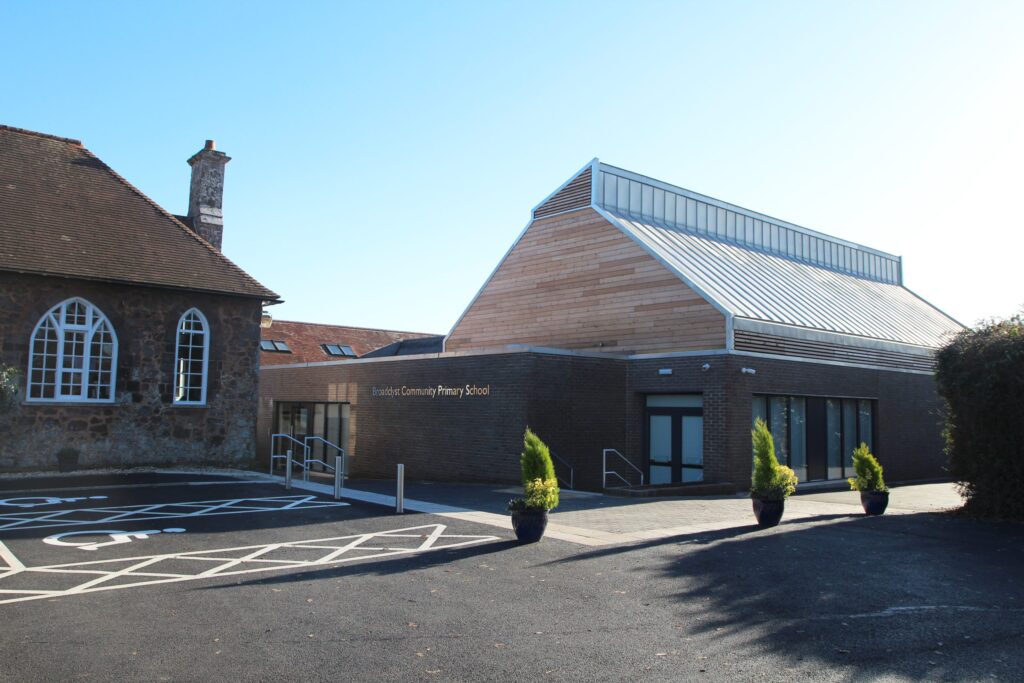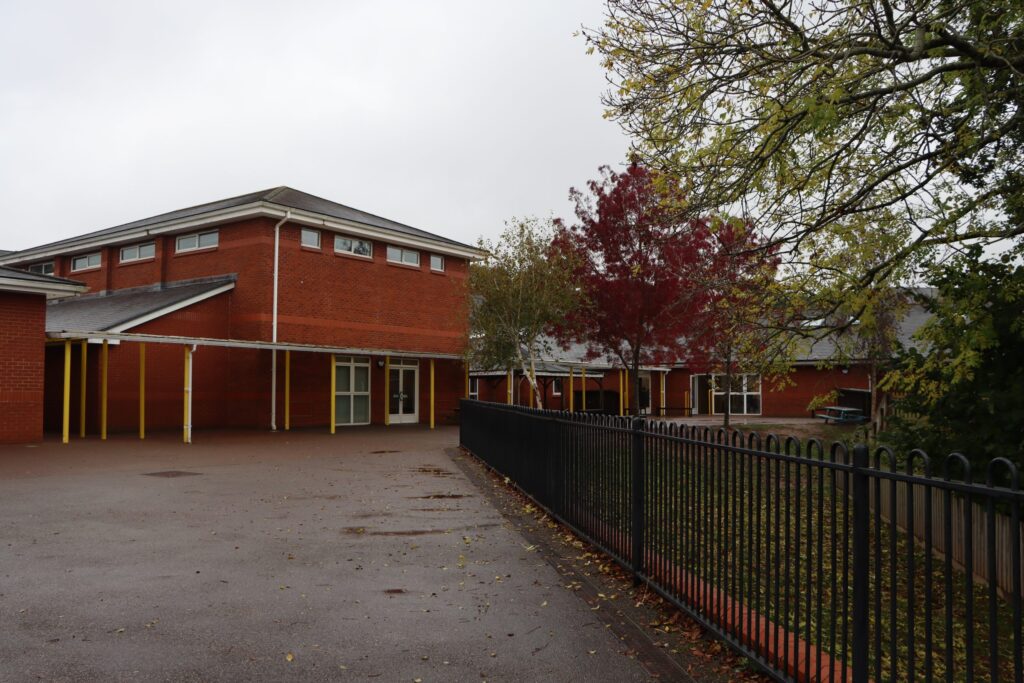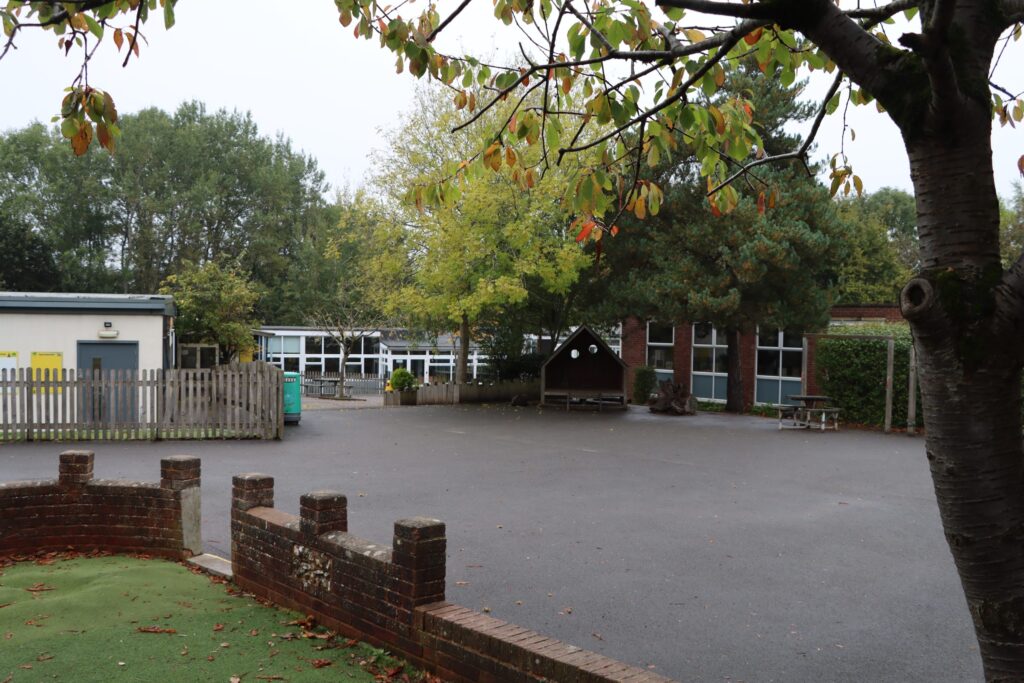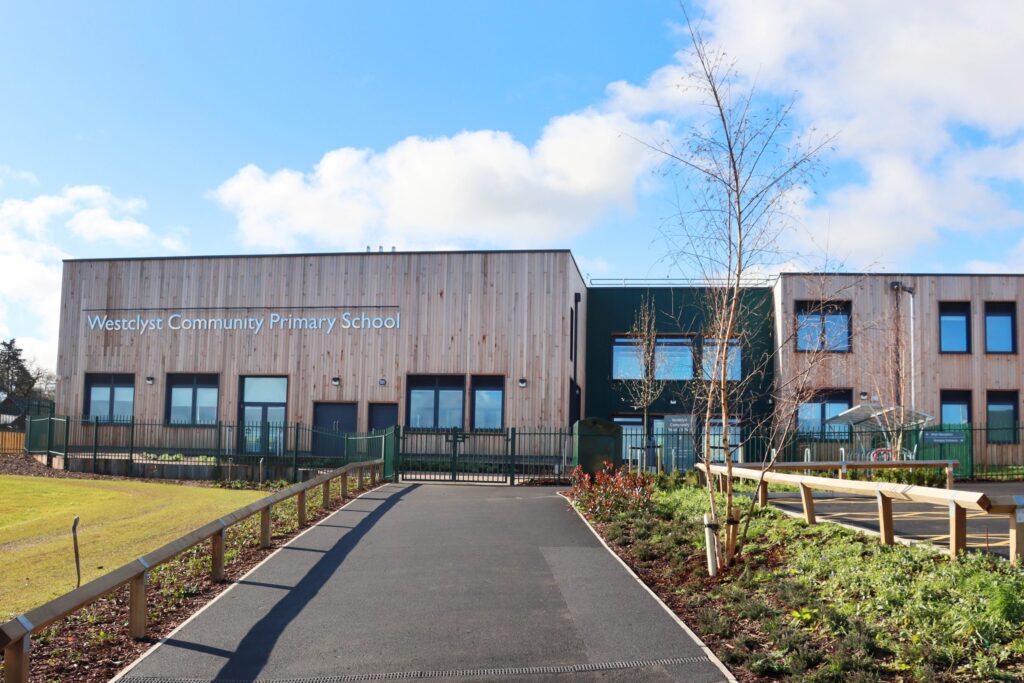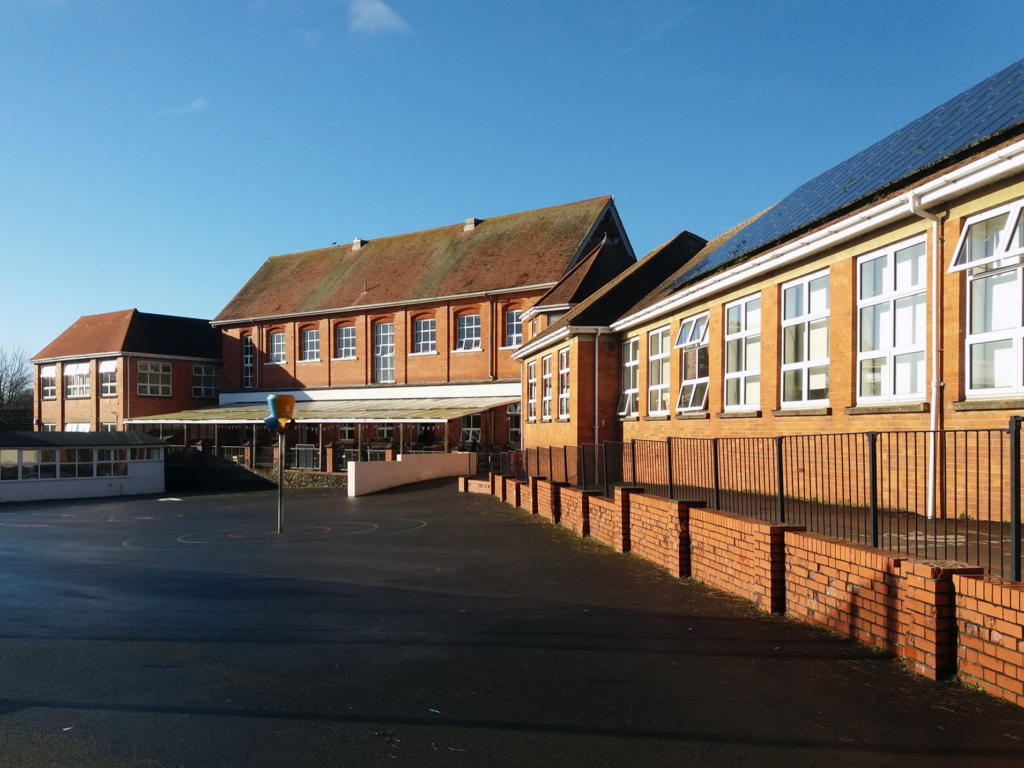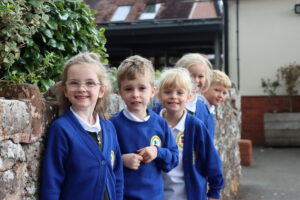
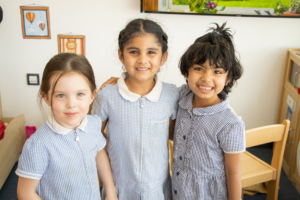
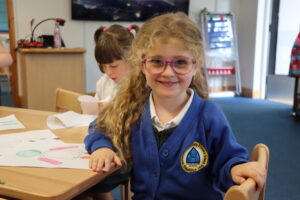
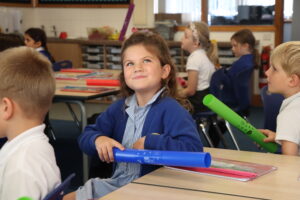
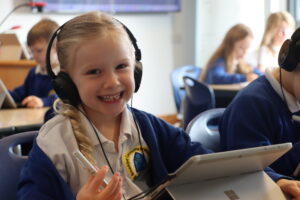
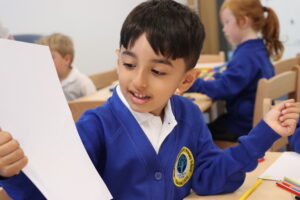
Spoken Language
- Listen to statements made by adults and classmates and respond appropriately
- Ask relevant questions to clarify and expand their knowledge; take opportunities to learn new vocabulary across all subjects; explain what their opinions are and why they hold them, giving some evidence in an increasingly articulate manner
- Give well-structured descriptions, explanations and narratives for different purposes, including for expressing feelings (to a level appropriate to age)
- Maintain attention and participate actively in short collaborative conversations, staying on topic and responding to comments; use spoken language to develop understanding through speculating, hypothesising, imagining and exploring ideas (to a level appropriate to age)
- Speak clearly and audibly, with developing fluency and an increasing command of Standard English; participate in class discussions, presentations such as student voice, performances in the studio and to a live audience, role play, improvisations
- Attempt to gain the interest of the listener(s) and begin to think about the opinions and views of others; become aware of formal & informal manners of speaking to an age appropriate level.
Word Reading
- Apply phonic knowledge and skills as the route to decode words and is automatically decoding a range of words
- Read accurately by blending the sounds in words that contain the graphemes taught so far, especially recognising alternative sounds for graphemes
- Read accurately words of two or more syllables that contain the same graphemes as above; read words containing common suffixes
- Read red words (sight vocabulary), noting unusual correspondences between spelling and sound and where these occur in the word
- Read aloud books closely matched to their improving phonic knowledge, sounding out unfamiliar words accurately, automatically and without undue hesitation as well as to re-read these books to build up their fluency and confidence in word reading
Reading – Comprehension
Engagement in Group and Class Reading
- Listen to, discuss and expresses views about a wide range of contemporary and classic poetry, stories and non-fiction at a level beyond that at which they can read independently discussing the sequence of events in books and how items of information are related
- Become increasingly familiar with and retelling a wider range of stories, fairy stories and traditional tales. To show an understanding that non-fiction books are structured in different ways
- Recognise simple recurring literary language in stories and poetry
- Discuss and clarify the meanings of words, link new meanings to known vocabulary and discuss their favourite words and phrases
- Build up a repertoire of poems learnt by heart, reciting some, with appropriate intonation to make the meaning clear
Independent Reading
- Draw on what they already know or on background information and vocabulary provided by the teacher, checking that the text makes sense to them as they read and correct inaccurate reading
- Explain and discuss their understanding of books, poems and other material, both those that they listen to and those that they read for themselves; make inferences on the basis of what is being said and done
- Answer and ask questions; predict what might happen on the basis of what has been read so far
Writing
Spelling
- Spell words containing each of the 40+ phonemes already taught and common exception words, such as the days of the week
- Name the letters of the alphabet in order and use letter names to distinguish between alternative spellings of the same sound
- Add prefixes and suffixes using the spelling rule for adding –s or –es as the plural marker for nouns and the third person singular marker for verbs; use the prefix un– and use –ing, –ed, –er and –est where no change is needed in the spelling of root words [for example, helping, helped, helper, eating, quicker, quickest]
- Apply simple spelling rules and guidance, as suggested by ReadWrite Inc.
- Write from memory simple sentences dictated by the teacher that include words using the GPCs and com-mon exception words taught so far
Handwriting
- Sit correctly at a table, holding a pencil comfortably and correctly; begin to form lower-case letters in the correct direction, starting and finishing in the right place; form capital letters and form digits 0-9
- Understand which letters belong to which handwriting ‘families’ (i.e. letters that are formed in similar ways) and to practise these
Grammar
- Leave spaces between words; joins words and joins clauses using, and beginning to punctuate sentences us-ing, a capital letter and a full stop, question mark or exclamation mark; use a capital letter for names of peo-ple, places, the days of the week, and the personal pronoun ‘I’
- Learn the grammar appropriate to year 1 (as stated by the NC) and use the grammatical terminology in Eng-lish Appendix 2 in discussing their writing
Composition
- Write sentences by saying out loud what they are going to write about; compose a sentence orally before writing it; sequence sentences to form short narratives and re-read what they have written to check that it makes sense
Number and Place Value
- Count in steps of 2, 3, and 5 from 0, and in tens from any number, forward or backward
- Compare and order numbers from 0 up to 100; use <, > and = signs
- Identify, represent and estimate numbers using different representations, including the number line
- Read and write numbers to at least 100 in numerals and in words
- Recognise the place value of each digit in a two-digit number (tens, ones)
- Describe and extend simple number sequences including odd and even numbers and counting on and back in steps of 1s, 2s, 3s, 5s, 10s and from any 2-digit number
Addition and Subtraction
- Recall and use addition and subtraction facts to 20 fluently, and derive and use related facts up to 100
Add and subtract numbers using concrete objects, pictorial representations, and mentally, including:
- Lengths and heights [e.g. long/short, longer/shorter, tall/short, double/half]
- Mass/weight [e.g. heavy/light, heavier than, lighter than]
- Capacity and volume [e.g. full/empty, more than, less than, half, half full, quarter]
- Time [e.g. quicker, slower, earlier, later]
- Recognise and use the inverse relationship between addition and subtraction and use this to check calculations and solve missing number problems.
Solve problems with addition and subtraction:
- Using concrete objects and pictorial representations, including those involving numbers, quantities and measures
- Applying their increasing knowledge of mental and written methods
- Solve simple problems in a practical context involving addition and subtraction of money of the same unit, including giving change (copied from Measurement)
Multiplication and Division
- Count in steps of 2, 3, and 5 from 0, and in tens from any number, forward or backward (copied from Number and Place Value)
- Recall and use multiplication and division facts for the 2, 5 and 10 multiplication tables, including recognising odd and even numbers
- Show that multiplication of two numbers can be done in any order (commutative) and division of one number by another cannot
- Calculate mathematical statements for multiplication and division within the multiplication tables and write them using the multiplication (×), division (÷) and equals (=) signs
- Solve problems involving multiplication and division, using materials, arrays, repeated addition, mental methods, and multiplication and division facts, including problems in contexts
Fractions (including Decimals and Percentages)
- Pupils should count in fractions up to 10, starting from any number and using the1/2 and 2/4 equivalence on the number line (Non Statutory Guidance)
- Recognise, find, name and write fractions 1/3, 1/4, 2/4 and 3/4 of a length, shape, set of objects or quantity
- write simple fractions e.g. 1/2 of 6 = 3 and recognise the equivalence of 2/4 and 1/2.
Algebra
- Recognise and use the inverse relationship between addition and subtraction and use this to check calculations and missing number problems. (copied from Addition and Subtraction)
- Recall and use addition and subtraction facts to 20 fluently, and derive and use related facts up to 100(copied from Addition and Subtraction)
- Compare and sequence intervals of time (copied from Measurement)
- Order and arrange combinations of mathematical objects in patterns (copied from Geometry: position and direction)
Measurement
- Compare and order lengths, mass, volume/capacity and record the results using >, < and =
- Compare and sequence intervals of time
- Choose and use appropriate standard units to estimate and measure length/height in any direction (m/cm); mass (kg/g); temperature (°C); capacity (litres/ml) to the nearest appropriate unit, using rulers, scales, thermometers and measuring vessels
- Recognise and use symbols for pounds (£) and pence (p); combine amounts to make a particular value
- Find different combinations of coins that equal the same amounts of money
- Solve simple problems in a practical context involving addition and subtraction of money of the same unit, including giving change
- Tell and write the time to five minutes, including quarter past/to the hour and draw the hands on a clock face to show these times.
- Know the number of minutes in an hour and the number of hours in a day. (appears also in Converting)
- Know the number of minutes in an hour and the number of hours in a day. (appears also in Telling the Time)
Properties of Shapes
- Identify and describe the properties of 2-D shapes, including the number of sides and line symmetry in a vertical line
- Identify and describe the properties of 3-D shapes, including the number of edges, vertices and faces
- Identify 2-D shapes on the surface of 3-D shapes, [for example, a circle on a cylinder and a triangle on a pyramid]
- compare and sort common 2-D and 3-D shapes and everyday objects
Position and Direction
- Use mathematical vocabulary to describe position, direction and movement including movement in a straight line and distinguishing between rotation as a turn and in terms of right angles for quarter, half and three-quarter turns (clockwise and anti-clockwise)
- Order and arrange combinations of mathematical objects in patterns and sequences
Statistics
- Interpret and construct simple pictograms, tally charts, block diagrams and simple tables
- Ask and answer simple questions by counting the number of objects in each category and sorting the categories by quantity
- Ask and answer questions about totalling and comparing categorical data
Knowledge
Chemistry – Everyday Materials
- Identify and compare the suitability of a variety of everyday materials, including wood, metal, plastic, glass, brick, rock, paper and cardboard for particular uses.
- Find out how the shapes of solid objects made from some materials can be changed by squashing, bending, twisting and stretching.
Biology – Plants
- Observe and describe how seeds and bulbs grow into mature plants find out and describe how plants need water, light and a suitable temperature to grow and stay healthy.
- Find out and describe how plants need water, light and a suitable temperature to grow and stay healthy.
- Find out about animals, including humans
- Notice that animals, including humans, have offspring which grow into adults
- Find out about and describe the basic needs of animals, including humans, for survival (water, food, air)
- Describe the importance for humans of exercise, eating the right amounts of different types of food and hy-giene
Biology – Living Things and Their Habitats
- Explore and compare the differences between things that are living, dead, and things that have never been alive.
- Identify that most living things live in habitats to which they are suited
- Describe how different habitats provide for the basic needs of different kinds of animals and plants and how they depend on each other
- Identify and name a variety of plants and animals in their habitats, including micro-habitats
- Describe how animals obtain their food from plants and other animals, using the idea of a simple food chain, and identify and name different
Biology – Animals Including Humans
- Describe the importance for humans of exercise, eating the right amounts of different types of food and hygiene.
- Notice that animals, including humans, have offspring which grow into adults find out about and describe the basic needs of animals, including humans, for survival (water, food, air).
- Identify that most living things live in habitats to which they are suited.
- Describe how different habitats provide for the basic needs of different kinds of animals and plants and how they depend on each other.
- Describe how animals obtain their food from plants and other animals, using the idea of a simple food chain, and identify and name different.
Physics – Forces
- Describe the changes in light, sound or movements, which result from actions such as switching on a simple electrical circuit, or pushing and pulling
- Build a simple series circuit and identify whether or not a lamp will light in a simple series circuit, based on whether or not the lamp is part of a complete loop with a battery
- Compare the movement of different objects in terms of speed or direction
Working Scientifically
Plan
- Ask simple questions and recognise that they can be answered in different ways
Do
- Observe closely, using simple equipment
- Perform simple tests
- Identify and classify
- Gather and record data to help in answering questions
Review
- Use their observations and ideas to suggest answers to questions
Investigation/Experiments
- Float or Sink – Pupils investigate building a floatation device. They develop their knowledge of materials and apply forces on them (squashing, bending etc) to create better floatation devices
- Growing Investigation (Ongoing) – Pupils investigate which of a plants needs is the most important by removing different necessities for each of their test plants.
- Growing Investigation – Pupils investigate which of a plants needs is the most important by removing different necessities for each of their test plants.
- Living to Non-Living Classification – Pupils sort a variety of different objects and stimulus into living and non-living.
- Nature Map – Pupils are given a blank map of the school grounds and identification keys that suit the location. They then populate their map with all the creatures and plants they identify as they journey around the school.
- Woodlice Hunt – Here the pupils become zoologists creating records of the number of woodlice they can find in a variety of different habitats around the school grounds.
An era of World History: Ancient Greece
- To build upon the pre-history learnt in Year 1 around Ancient Egypt and Ancient Wonders.
- How Ancient Greeks lived and learn about their culture.
- To explore Greek myths and legends.
- To understand why the Greek culture is still relevant now (e.g. The Olympics, Legends, Democracy)
- The concept of slavery and what it means.
- About ethical blind spots around slavery from the Ancient Greeks.
A Local Historical Study: World War Two
- How World War Two started and ended.
- To reflect on life in the trenches.
- To reflect on life as an evacuee.
- How to compare changes over the war, both positive and negative.
- What life was like before, during and after the War.
- What life was like in Exeter/Barnstaple during the Blitz.
- What the school site was used for in World War Two.
An investigative chronological enquiry: ‘Are events solely a disaster or a triumph?’
- To investigate a range of perceived historical triumphs and disasters.
- To recognise the difference between old and new.
- To place some events on a timeline and use this to support the retelling of past events.
- To draw comparisons between our lives today and the lives of others in the past.
An Area of Human Geography: Understanding Britain
- To name and locate the four countries of Britain.
- To identify the capital cities of these countries.
- To look for similarities and differences between Devon, Spain and Kenya through the study of human geography. For example, city layout, location and infrastructure.
Two areas of Physical Geography: Understanding Britain & Natural Disasters
- To explore the relevant seas around the countries.
- To look for similarities and differences between Devon, Spain and Kenya through the study of physical geography. For example, rivers, seas and mountain ranges.
- To describe and understand how earthquakes and tsunamis occur – drawing upon historical events.
A range of Geographical skills: Map Reading, Map Making & Fieldwork
- To use world maps, atlases, globes and digital maps to locate where they live and their locality.
- To use simple compass directions (N, E, S, W)
- To know which direction North is on an Ordnance Survey Map.
- To devise a simple map of a local area and construct a key with basic symbols.
- To begin drawing objects to scale on a map.
- To use digital maps to search postcodes, add labels and measure local distances.
- Use simple fieldwork and observational skills to study how children travel to school and compare it with how travel happens in Kenya.
- To data collect, analyse data and present this information in clear way.
MFL Links: Spanish Geography
- To name and locate the capital city of Spain.
- To explore any natural disasters that have occurred in Spain, for example: Lorca Earthquake or Hierro Eruption.
- Look at aerial photographs to identify Spanish landmarks.
Learning about Religion: Texts and Tales
- About who Hindus are and who they worship.
- To recall the rules each belief follows.
- To identify what texts are important to each belief and hear some of their stories.
- To consider why these stories are important.
- To consider what tales are told to Humanists and what they might teach us.
Learning from Religion: ‘Religious stories tell us how best to live our lives. Discuss.’
- To consider their own reading interests and reflect on the morals of the stories.
- An awareness of how religious texts are special and how to respect them.
- To discuss how religious texts guide the lives’ of their followers.
British Council Theme for Global Citizens: Conflict and Peace
- To understand why conflict occurs when ideas, beliefs and attitudes clash.
- How to resolve, avoid and work through conflicts to achieve peace.
- To develop friendship making skills.
Computer Science
- To understand instructions in sequences and the use of logical reasoning to predict outcomes.
- To use given commands in different orders to investigate how the order affects the outcome.
- To learn about design in programming and develop artwork and test it for use in a program.
- To design algorithms and then test those algorithms as programs and debug them.
- To explore the links between events and actions
- To learn to move a sprite in four directions (up, down, left, and right).
- To explore movement within the context of a maze, using design to choose an appropriately sized sprite.
- To identify programming extensions, through the use of Pen blocks.
- To draw lines with sprites and change the size and colour of lines.
- To design and code their own maze-tracing program.
Information Technology
- To understand what the term data means and how data can be collected in the form of a tally chart.
- To use the term ‘attribute’ and use this to help them organise data.
- To present data in the form of pictograms and finally block diagrams.
- To use the data presented to answer questions.
- To use a computer to create music.
- To listen to a variety of pieces of music and consider how music can make you think and feel.
- To compare creating music digitally and non-digitally.
- To identify patterns and purposefully create music.
- To recognise that different devices can be used to capture photographs
- To gain experience capturing, editing, and improving photos.
- To recognise that images they see may not be real.
Digital Literacy
- To look at information technology at school and beyond, in settings such as shops, hospitals, and libraries.
- To investigate how information technology improves our world, and they will learn about using information technology responsibly.
- To use technology safely and respectfully, keeping personal information private; identify where to go for help and support when they have concerns about content or contact on the internet or other online technologies.
London’s Burning
- Building upon the applying contexts within art, fiery art that reflects an historic event.
- Using mixed media and new techniques including marbling and fine cutting.
- Fine cutting builds upon cutting techniques in Y1, Aut 1 and Spring 1.
Remembrance Day – Cool and Warm Colours/span>
- Introducing concepts of mood/emotion within art. Exploring how specific colours can tell a story and alter the meaning behind an image.
WW2 Medal
- Building on previous learning, using clay to represent an artifact.
- Precise cutting, smoothing and impressing motifs/emblems into the surface of the clay.
Art Around the World – Hundertwasser
- Appreciating that art is from other countries and cultures.
- Adopting the colours of the culture/style of artist.
- Creating art in the style of another artist and immersing themselves into a different culture provides depth to their awareness of different art and cultures.
- Oil pastels introduced as another form of linear drawing; developing drawing techniques to create different effects and textures and colour.
Bangladesh – Printing
- Mark making through printing using found objects and vibrant colours to represent that of a particular culture. This enhances their understanding of other cultures and countries.
- Printing is a new technique that requires accuracy, concentration and a measured approach to avoid distorting the image.
Collaborative Work – Create a Hanging Mobile
- Joan Miro inspired artwork. Starting with 2D abstract drawings.
- Learning to understand the idea of subjective rather than objective art using shape, line, form and colour arranged in an interesting composition.
- Introducing sound as an inspiring factor.
Camouflage Pictures
- Masking technique is newly introduced.
- Painting and cutting are developed with practise to create a 3D drawing and optical illusion.
- An exploration of how nature can provide much inspiration.
- Progression includes building on skills such as cutting, painting, sticking and observing.
Observational Drawing
- Developing observational drawing from previous portraits, children add details using a pencil and look very closely at naturally detailed objects.
- Supported by a guided drawing session, children draw a cactus
Sculpture (Desert Project) Cactus
- Showing progression within this project, children realise their drawings progressing into a 3D design using modelling materials and paint.
- Applying paint to an uneven surface.
Knowledge
- Use the basic principles of a healthy and varied diet to prepare dishes.
- Understand where food comes from.
- Build structures, exploring how they can be made stronger, stiffer and more stable.
- Explore and use mechanisms [for example, levers, sliders, wheels and axles], in their products.
- Evaluate their ideas and products against design criteria.
- Select from and use a wide range of materials and components, including construction materials, textiles and ingredients, according to their characteristics.
- Select from and use a range of tools and equipment to perform practical tasks.
- Design purposeful, functional, appealing products for themselves and other users based on design criteria.
Project
- Eggy Challenge: Parachute Drop – The Pupils will use parachutes they have designed to slow the descent of an egg when dropped from a high point.
Singing
- Sing simple songs, chants and rhymes) from memory, singing collectively and at the same pitch, responding to simple visual directions (e.g. stop, start, loud, quiet) and counting in.
- Begin with simple songs with a very small range, mi-so. Include pentatonic songs
- Sing a wide range of call and response songs to control vocal pitch and to match the pitch they hear with accuracy.
Listening
The following styles of music will be introduced.
Western Classical Tradition and Film:
- Classical e.g Mozart
- 20th Century e.g Holst
Popular Music:
- Art pop e.g Kate Bush
- Blues e.g Ma Rainey
Musical Traditions:
- Brazil- Samba e.g Sergio Mendes/Carlinhos Brown
Composing
- Improvise using question and answer phrases.
- >Create short sequences of sounds in response to stimuli.
- Understand the difference between creating a rhythm pattern and pitch pattern.
- Use music technology.
- Recognise how graphic notation can represent created sounds.
Musicianship
Pulse/Beat
- Walk, move or clap a steady beat with others, changing the speed of the beat as the tempo of the music changes.
- Use body percussion and classroom percussion playing repeated rhythm patterns (ostinati) and short, pitched patterns on tuned instruments to maintain a steady beat
- Respond to the pulse in recorded/live music through movement and dance
Rhythm
- Perform short copycat rhythm patterns accurately, led by the teacher
- Perform short repeating rhythm patterns (ostinati) while keeping in time with a steady beat.
- Perform word-pattern chants (e.g. ca-ter-pil-lar crawl, fish and chips); create, retain and perform their own rhythm patterns
Pitch
- Listen to sounds in the local school environment, comparing high and low sounds.
- Sing familiar songs in both low and high voices and talk about the difference in sound.
- Follow pictures and symbols to guide singing and playing, e.g. 4 dots = 4 taps on the drum.
Relationships: Friendship; feeling lonely; managing arguments; behaviour; bullying; words and actions; respect for others
- How to make friends with others
- How to recognise when they feel lonely and what they could do about it
- How people behave when they are being friendly and what makes a good friend
- How to resolve arguments that can occur in friendships
- How to ask for help if a friendship is making them unhappy
- How words and actions can affect how people feel
- Why name-calling, hurtful teasing, bulling and deliberately excluding others is unacceptable
- How to respond if this happens in different situations
- How to report bullying or other hurtful behaviour, including online, to a trusted adult and the importance of doing so
Health and Wellbeing: Keeping safe; recognising risk; rules; being healthy: eating, drinking, playing and sleeping; feelings; mood; times of change; loss and bereavement; growing up
- How rules and restrictions help them to keep safe (e.g. basic road, fire, cycle, water safety; in relation to medicines/ household products and online)
- How to identify risky and potentially unsafe situations (in familiar and unfamiliar environments, including online) and take steps to avoid or remove themselves from them
- How not everything they see online is true or trustworthy and that people can pretend to be someone they are not
- That eating and drinking too much sugar can affect their health, including dental health
- How to be physically active and how much rest and sleep they should have everyday
- That there are different ways to learn and play; how to know when to take a break from screen-time
- How sunshine helps bodies to grow and how to keep safe and well in the sun
- How to recognise, name and describe a range of feelings
- What helps them to feel good, or better if not feeling good
- How different things / times / experiences can bring about different feelings for different people (including loss, change or bereavement or moving on to a new class/year group)
- How feelings can affect people in their bodies and their behaviour
- Ways to manage big feelings and the importance of sharing their feelings with someone they trust
- How to recognise when they might need help with feelings and how to ask for help when they need it
Living in the Wider World: People and jobs; money; role of the internet
- How jobs help people earn money to pay for things they need and want
- About a range of different jobs, including those done by people they know or people who work in their community
- How people have different strengths and interests that enable them to do different jobs
- How people use the internet and digital devices in their jobs and everyday life
- Master basic movements including running, jumping, throwing and catching, while developing balance, agility and co-ordination, and begin to apply these in a range of activities.
- Perform simple sequences of different actions using floor and apparatus independently.
- Develop simple tactics for attacking and defending in team games.
- Perform Dances using simple movement patterns.
- Identify most trees and wildlife habiting in our Forest School site.
- Find out about the different kinds of plants & animals in the local environment.
- To describe shapes & differences between leaves.
- To make & use keys for tree identification.
- Introduced to fire starting techniques and the fire triangle.
- Grow the necessary vegetables to create this to create a main meal to eat.
Language Knowledge
- To count to 30
- To ask and answer questions relating to basic conversation (family, pets)
- Hobbies
- Family members (cousins, stepfamily)
- Common animals
- Where I live – rooms in the home
- How I look – descriptions
Speaking and Listening
- I can listen carefully to spoken Spanish and respond.
- I can speak in basic sentences.
- I can appreciate stories, songs, poems and rhymes in Spanish.
- I am developing accurate pronunciation and intonation so that others understand me when using words I know.
- I can engage in conversations; ask and answer questions; express opinions and respond to those of others.
Reading and Writing
- I can write single words to label a picture.
- I can link the spelling, sound and meaning of words.
- I can spell basic vocabulary that could be used to form sentences.
Year 2
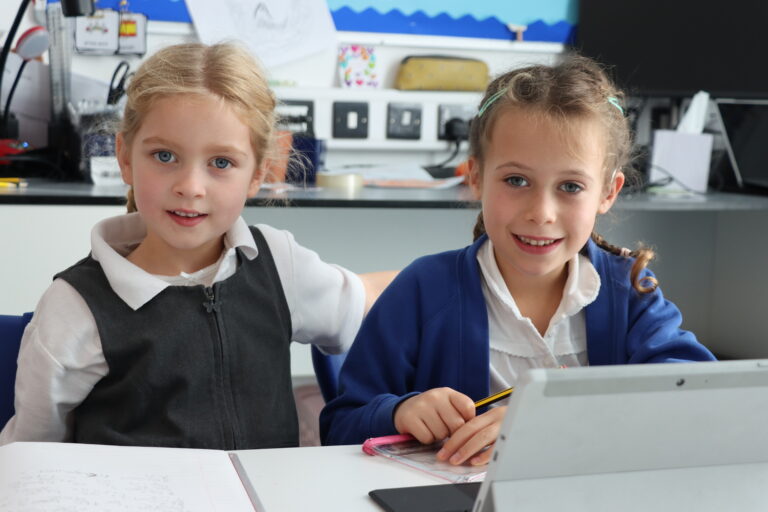
Year 2 is the final year of KS1; the children become more independent and take more responsibility for their learning. As a result of this there are more opportunities on offer including swimming and instrumental lessons.
Our Year 2 Teachers

Broadclyst
Paris Rogers

Broadclyst
Megan Williams
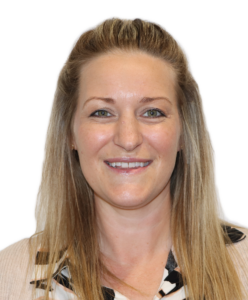
Monkerton
Ellie Gardner

Monkerton
Anna Heard

Westclyst
Christina Gunn

Westclyst
Simarjeet Singh

Yeo Valley
Anna Grant



